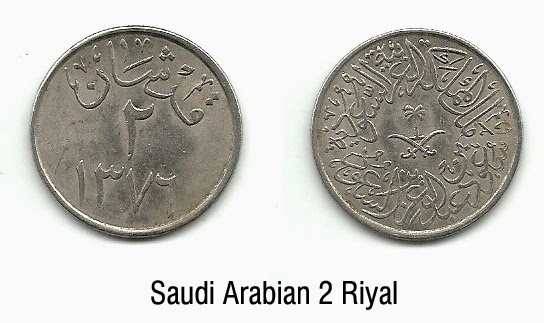Recently I found my late
grandmother's collections of old coins of the 20th century of different
countries. I polished it using tamarind, vinegar and some powder. After that, it’s
ready. From Colonial India to Post World War Europe and from America and Hong
Kong to Middle East, I’ve got coins from different parts of the world. I have
scanned those coins and uploaded them with details. Here’s it.
British Indian Rupees
These are the coins of
India during the British rule after end of the revolt of 1857 when East IndiaCompany rule ended and British Government took direct control of India.
 |
| This coin was minted in 1906 |
 |
| Silver Coin |
 |
| Copper Coins |
Portuguese Indian Rupees
The Portuguese rule started in India before the British and left India after the British left. They had regions like Goa, Dadra & Nagar Haveli, Daman & Diu and for some time Bombay and Calicut under their rule. When their rule started in India Portugal was a Kingdom and hence their initial coins had the head of their monarch and the Royal Coat of Arms. In later days when the country became a Republic, the Emblem was modified.
 |
| Coin when Portugal was a kingdom. Left has the head of the monarch and right has the Coat of Arms |
 |
| Coin of Portuguese India after Portugal became a Republic. It has the Coat of Arms of the Republic. |
Rest of India got Independence from Britain in 1947 while Portuguese still ruled regions of India till 1961. These coins were minted in 1947 and 1952 i.e. after the independence of India.
Middle-Eastern Coins
This coin was minted prior to the Islamic Revolution in Iran. Probably when the country was ruled by the Pahlavi dynasty, if not the Qajar dynasty. The Emblem on the coin showing a lion with a sword and the rising Sun behind it was used during the Qajar and Pahlavi rule.
 |
| Imprinted in Arabic and French |
From the Coat of Arms showing a palm tree and two swords in cross we can predict it must be a Saudi Arabian Riyal.
 |
| Possibly its also Saudi Arabian |
 |
| May be a Moroccan coin |
British Penny(Pound)
Coins of Colombia
In Spanish, Dollar is called Peso while its subdivision Cents are called Centavos. In fact its the other way around. Originally Spanish Peso were called Dollars in English and were used by American before minting their own currency. The sign "$"came from $panish Peso.
Post Independence Indian Rupee
 |
| Minted in 1947 |
The Coin above was minted in 1947, after India got Independence. It was the Indian Union back then and British monarch was still the titular Emperor of India. The Coin below however was minted after India became a Republic. When the nation got its Constitution and President. Therefore it has the National Emblem of India, the Ashoka Lion Capital.
 |
| Minted in 1951 |
 |
| Minted in 1955 |




.jpg)























Comments
Post a Comment